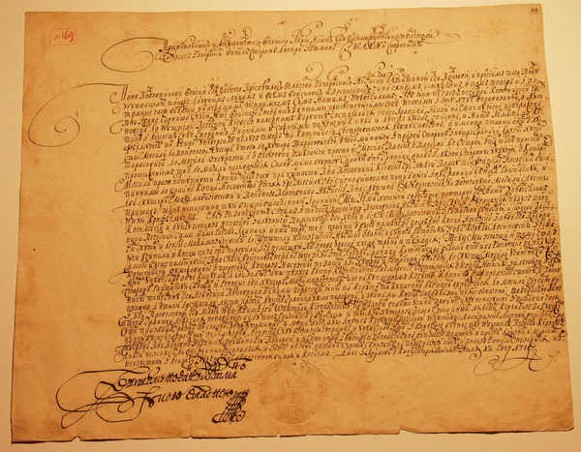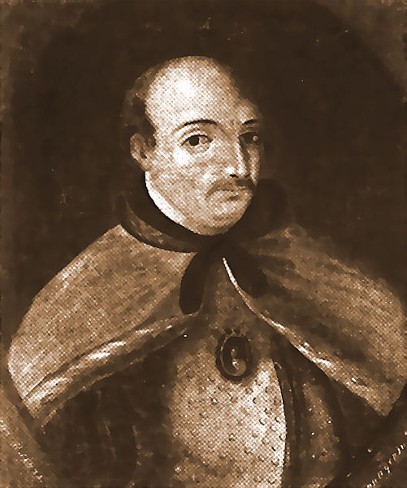Skoropadsky, Ivan
Skoropadsky, Ivan [Skoropads’kyj], b 1646 in Uman, d 14 July 1722 in Hlukhiv. (Portrait: Ivan Skoropadsky.) Cossack leader and hetman of Ukraine (1708–22). After the Turks leveled Uman in 1674, he moved to Left-Bank Ukraine, where he served under Hetman Ivan Samoilovych as military chancellor (1675–6), secretary of Chernihiv regiment (1681–94), general standard-bearer (1698), and second general osaul (1701). He was sent on many diplomatic missions: on behalf of Samoilovych he went to Moscow (1675 and 1676) and the Crimea (1681), and on behalf of Hetman Ivan Mazepa he went to Poland (1690), Moscow (1693 and 1696), and the Zaporozhian Sich (1703). In 1706 Mazepa appointed him colonel of Starodub regiment.
Skoropadsky was elected hetman at the Council of Officers in Hlukhiv on 6 November 1708. Peter I never fully trusted him, however; he refused to ratify the Reshetylivka Articles of 1709 drawn up by Skoropadsky for a new agreement between Ukraine and Russia, and he held up the official documents confirming Skoropadsky as hetman until 1710. Skoropadsky, with the troops of Cossacks loyal to him, nevertheless fought alongside Russian troops in the Battle of Poltava.
The Russian victory freed Peter I from any further restraint in his policy toward Ukraine. Devastated by war, Russian repressions, and a plague epidemic, Left-Bank Ukraine became a military colony. Not only did Peter station 10 dragoon regiments on Ukrainian territory at the expense of the local population, he also interfered increasingly in Ukraine's internal affairs, which previously came under the jurisdiction of the hetman. The Cossack army was put under Russian command, and the general artillery was deported to Russia. The capital of the Hetman state was moved to Hlukhiv in 1709, and the hetman became subject to constant supervision by Russian residents of the tsar. The Russian tsar reserved the right to appoint higher-echelon officers (the general starshyna, colonels, and even captains), and he replaced Ukrainians with Russians, Moldavians, Serbs, and Poles.
On 27 May 1722 Peter I set up the Little Russian Collegium, which sharply reduced the powers of the hetman and the Ukrainian government. Cultural and religious life was also subjected to restrictions: Ukrainian printing was proscribed in 1720, and the Kyivan Mohyla Academy was repressed. The terrorized Ukrainian people began to turn against the hetman and his government. Skoropadsky's protests against Russian actions had little influence on the tsar, who had already decided to limit Ukrainian autonomy and abolish the Hetman state when Ivan Mazepa allied with Sweden. Skoropadsky was buried in the Hamaliivka Monastery near Hlukhiv.
BIBLIOGRAPHY
Kostruba, T. Het’man Ivan Skoropads’kyi 1709–1722 (Lviv 1932)
Ohloblyn, O. Ukraïna za chasiv Skoropads’koho i Polubotka (Kyiv 1941)
Mel’nyk, Leonid. Het’manshchyna pershoï chverti XVIII stolittia (Kyiv 1997)
Hurzhii, Oleksander. Het’man Ivan Skoropads’kyi (Kyiv 1998)
Oleksander Ohloblyn
[This article originally appeared in the Encyclopedia of Ukraine, vol. 4 (1993).]

.jpg)


.jpg)